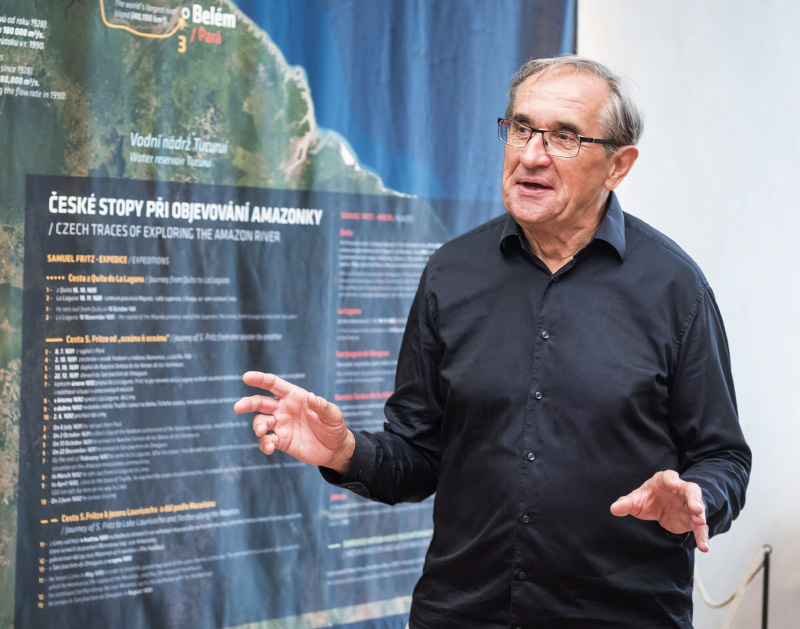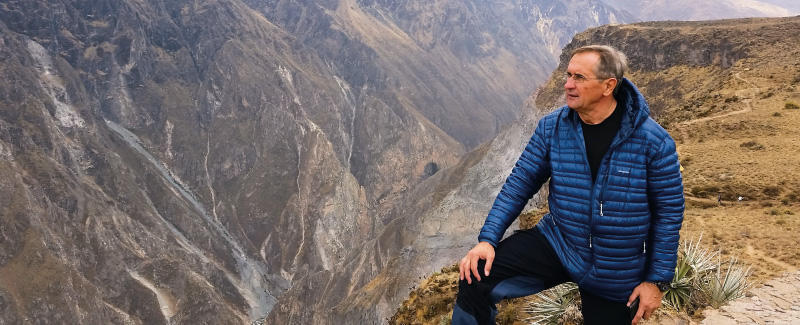On the following pages, we will travel, play sports, and also compare. It was my great pleasure to interview my teacher, now a colleague, and a personality whom I greatly respect not only in the field of hydrology, water management, and physical geography. We will reminisce about the past years and talk about the present and the near future with the discoverer of the sources of the Amazon and a prominent Czech geographer, Prof. RNDr. Bohumír Janský, CSc., from the Faculty of Science, Charles University in Prague.
Professor, since we know each other quite well, I will ask you a direct question, and I will direct it towards the East. Today, Russia is viewed in many negative ways; you often travelled there during communism, participated in excursions, and gave lectures there. How do you remember the years spent on Baikal?
I first visited Baikal in 1978, then as a young assistant at the Department of Physical Geography as part of a student exchange with Lomonosov University under the guidance of Professor Král. During this excursion we flew an incredible 16,000 km, which I cannot even imagine today, in times of economic and time constraints. Among other things, at the Lomonosov University summer camp in Crimea, we and the students defeated their first-league team Lokomotiv Moscow, who were training there, in a friendly football match, thanks to which the entire Bakhchisaray knew us. In total, I took part in fifteen such excursions throughout the Soviet Union, including the polar Urals, the Arctic Ocean coast with the Kola and Taimyr peninsulas; later, I visited Kamchatka with Russian students. Those were wonderful years; for geographers, excursions are the most important and valuable thing of all, when they see everything in context.
In 1981, as part of a scholarship stay, I gave a lecture on hydrology at Irkutsk University. Thanks to this stay, together with Russian graduate students I went to Baikal again, specifically Olkhon Island, for three whole months. I worked there at the world-famous Limnological Institute of the Academy of Sciences in Listvyanka at the mouth of the Angara River and was professionally involved in the Baikal hydrological balance. As part of the then freshwater testing of bathyscaphes that were brought there for testing from the Pacific Ocean, I dived to a depth of 1,200 m and was able to taste the water samples taken from this depth. It was, of course, delicious; they even made the local vodka named Baikal from it, which I then received as a gift by mail and I have it to this day. I then presented this experience with great enthusiasm during a for me very important internship in Switzerland at ETH Zurich, where I led several excursions with Swiss students right after the Velvet Revolution. Today, ETH Zurich has its own hydrochemical laboratory on Baikal. I can say that I was there at its inception.
However, I have a funny story connected with Baikal. Thanks to my experience, after the Velvet Revolution, a group of Czech surfers approached me and asked if I would help them plan the ideal route for crossing it. I talked them out of the longitudinal route, about 630 km; however, the transverse route, 120 km north of Olkhon Island, seemed realistic. When we finally arrived there, the captain, who had been drinking, did not know exactly where to anchor, so we looked for the shore using searchlights. In the morning, we woke up on a boat stuck on a sandbar in absolutely windless weather and waited for the wind for several days. In the end, I came up with the idea of taking advantage of the breeze flow, i.e. the wind blowing from the land to the sea at night and in the morning. So, we set off from Sarma with six surfers at two in the morning. By the way, in the deep darkness, we temporarily lost the Soviet Union surfing champion. However, around ten o’clock, at the northern cape of Olkhon Island, the breeze died down. Fortunately, after about an hour, the Sarma – the local downwind from the mountains – blew at our backs and the surfers covered the rest of the route to Ust-Barguzin, which is about 60 km, in perhaps an hour and a half. By then, everyone knew about us and a welcoming delegation with national television awaited us on the shore, where I sang the well-known song “Slavnoye more, svyashchenij Baikal” with the National Artist of the Soviet Union. Subsequently, our Karel Gott sang the song (laughs).
However, your lifelong love is Latin America, whose physical geography you have been lecturing on at the Faculty for many years. What captivated you about it? More from the perspective of hydrology and water management, or the people?
It all started when I was about eight years old, when my grandfather, a monarchist, landowner and educated man, brought me the pulp magazine Gauchos – shepherds of semi-wild herds in the pampas, which completely enchanted me. I opened Kuchař’s World Atlas, saw the colour blue on the map (rivers and lakes, author’s note) and my interest in South America and geography never left me. I have always been fascinated by water; even at elementary school, my friends and I would measure flow rates in streams, catch trout in our hands, and skate twelve kilometres to school in Plasy on the frozen Střela river. I enjoyed geography so much that I even occasionally taught it to my classmates from the lower grades at secondary school, of course as a substitute after agreement with the professor. When I was lecturing on Latin America at the university, I considered it necessary to learn Spanish in order to better understand the subject. So, I attended the so-called Intex at the castle in Poděbrady, which was intended for our foreign experts. By the way, my Spanish teacher, Dr. Jaroslav Nigrin, acted as an interpreter at a personal conversation between our then president Gustáv Husák and Fidel Castro. In the late 1980s, the university’s international office called me to ask if I wanted to fly to Peru, saying they had bought a ticket and the person in question had fallen ill… without hesitation, I happily agreed. I flew there on 10 October 1989 – originally planned for six weeks. From Peru, I then followed what was happening across the ocean in our country; on 18 November, on the front page of the newspaper, I saw the faculty building with a window into my office and next to it a photo of Václav Havel with Alexandr Vondra, whom I had taught at the faculty for years and who had even started his diploma thesis with me before switching to geomorphology. However, I ended up staying in Peru for almost a year – I accepted guest positions at universities in Lima, Cusco and Arequipa and did not return to my homeland until June 1990.
I have been lecturing at the faculty for decades now; in addition to hydrology and oceanography, I also lecture on the geography of Latin America, including a seminar where we invite diplomats, businessmen, artists, and other globetrotters. I also serve as the chairman of the Czech Ibero-American Society, which I find very fulfilling. We map social and cultural life – everything that is happening in the Czech Republic on the topic of Latin America. We are in touch with seven bilingual grammar schools, with whom we organize a competition on Latin America with the announcement of the winners in the historical Náprstek Museum. And that is beautiful.
As part of organizing exhibitions and lectures, you have visited many prestigious as well as regional universities around the world. What is the attitude of their students towards hydrology? Do you remember anything that surprised you?
In the first hydrology lecture, I always tell our students that they are no longer in secondary school, so they have to discuss with us or critically contradict the information they have obtained through argument, mainly in seminars designed for this purpose. However, this is still incomparable with the Western world, and it could even be a small regional university in Peru. I probably experienced the warmest welcome at the University of San Antonio Abad in Cusco, where students took me on numerous excursions around the area, such as to the Madre de Dios river in the Amazon; they also regularly invited me to visit their families, and the local geography professor even offered me free housing in his apartment right on the Plaza de Armas, opposite the famous cathedral. I, in turn, tried to integrate myself into university life there by learning the Lord’s Prayer in Spanish for the church service, which was always held an hour before classes. The dean appreciated it and told me that none of the invited foreign guests had done this before.
Fig. 1. Opening of a travelling exhibition around South American universities for 25 years since the discovery of the sources of the Amazon by Czech scientists
I also think that students at smaller universities are more grateful for the information they receive, and after lectures, it is quite common for teachers to be applauded or even tapped on the desk, like at universities in Seville or Heidelberg. This was also true of Irkutsk University, by the way. There, May Day celebrations were the crowning glory; students were provided support funds to last the celebrations, in the form of a bottle of vodka for three people, which, imagine, was paid for by the faculty (!). But seriously, here, the overall approach of students to education, and this also applies to engaging in discussions during classes, is much more reluctant, and we lack in this area compared to the rest of the world.
You are still one of the busiest teachers at the Faculty of Science at Charles University. How have teaching opportunities changed in this regard since the turn of the millennium, when I studied physical geography with you myself? And in general: in your opinion, is interest in water studies growing or declining over time compared to then?
Today, in addition to standard lectures on hydrography, hydrology and oceanography, we have other specialized subjects such as water management and protection, hydrological extremes and, for English-speaking students, a lecture on Flood Risk Management. Thanks to my many years of effort, and I am truly proud of it, we have managed to establish and accredit a completely new study programme, which is cross-sectionally covered by teachers from the ranks of hydrologists, geologists, ecologists, biologists, and chemists dealing with water. At the bachelor’s level, it is Surface water and Groundwater, and at the master’s level, Hydrology and Hydrogeology. Students will thus gain a comprehensive overview of the nature, use, quality, and protection of water, both surface and groundwater. No other university in the Czech Republic offers this, and I dare say that it has attracted a number of new students. We would like to compete better with technical fields focused on water, or agricultural fields.
Therefore, we try to work with the most modern technologies and devices; for mapping, we use a set of several drones of different sizes as well as total geodetic stations, flow trackers, and ADCP floats for measuring river flows, advanced GIS technologies. In Šumava we have had a number of stations measuring for over twenty years; we have meteorological stations at the source of the Amazon and in Kyrgyzstan. The South American one is at an altitude of 5,300 m above sea level, i.e. higher than the American station on Denali (Mt. McKinley). It sends the measured data every hour via satellite. We organize international field courses in physical geography in cooperation with the universities of Heidelberg and Milan. We have also prepared a master’s degree programme, which students will complete at three universities (Heidelberg, Milan, Prague), receiving three diplomas. We are also waiting for stronger demographic years, so that we can afford a greater selection of students in the entrance exams. If, for example, every fourth student succeeds, we have a greater guarantee that students will want to stay in that field and geography is their priority. If we accept almost everyone, many of them drop out after the first year for various reasons. Regional universities also compete with us in that life in Prague is expensive for students and they can get a degree anywhere other than Prague. I would like future employers to ask, as is common in Western countries, not just whether an applicant graduated, but also from which university.
I am convinced that regional universities, and this is true in general, cannot provide the same professional level of education for those who really want to succeed in their field or scientific discipline. I say this with all seriousness as a member of the National Accreditation Authority. We currently have over forty small, regional private universities, which is probably a record for the number of inhabitants. It is good business, but the quality of teaching varies, including the demands of thesis writing, and students often do not have access to the latest research findings. Otherwise, I personally was lucky to always surround myself with people interested in science and a given field of study, who are not necessarily first-class students, but rather students who think objectively, logically, and geographically. These are people who work in the field with joy and enthusiasm, where they obtain valuable data in order to research and subsequently publish. Many of them then became my colleagues.
With a team of hydrologists, including myself as a PhD student, you have been researching lakes, river water quality, and bogs for a long time. What can be taken away from those years of continuous research as the most important insight into their functioning and importance for the Czech countryside?
I believe – and we are talking about soil, lakes, bogs and watercourses – that what we have here, i.e. water in the landscape – that we must not only protect but also multiply its reserves for the future. For example, on the Liboc stream, there is 1.5 to 1.6 times more evaporation than precipitation, the righthand streams of the Ohře regularly dry up in the summer, and the Rakovník, Žatec, and Podbořany districts are deeply passive in terms of balance. However, the solution may not necessarily be just the construction of new dams according to the General LAPV, although we will probably have no other choice in these passive areas in the future. As part of the project of the Technology Agency of the Czech Republic, my colleagues and I are working on the restoration of historical small water reservoirs in the headwaters of rivers, or even the possible restoration of ponds. However, I feel a lot of resistance from nature conservationists there, even though those reservoirs functioned well for more than a hundred years until the 1960s, fulfilling both a retention and an accumulation function. Both are important – one helps to solve the adverse consequences of floods, the other of droughts.
For larger dams, it is difficult to make decisions based on the pros and cons. Where, in the long term, the positives outweigh the negatives, politicians (whom I certainly do not envy) have an easier time making decisions than in places where dams are not wanted in the long term. From a nationwide perspective, as climate change progresses, it will probably be necessary to build new reservoirs, especially the water management ones. However, we must not forget about the restoration of river ecosystems, construction of wetlands and pools, reduction of the speed of water runoff from the landscape through less soil compaction, improving its structure, and construction of anti-erosion measures in the landscape. We have known all this for a long time, but it is more difficult to implement this knowledge in reality.
As for the quality of river water, after the Velvet Revolution there was a significant improvement in the water quality in our streams from quality class IV–V to class II–III.; this was due to a decrease in fertilizer application and, in particular, the massive construction of municipal and industrial wastewater treatment plants with European money, often directly from Germany because two-thirds of our land drains into Germany. There has been a huge shift there. However, over the past ten years, the water quality has not improved, and even – especially in small streams in the countryside – has deteriorated due to the increase in water temperature. Therefore, it is necessary to convince the responsible ministries and municipalities to build sewerage and wastewater treatment plants even in the smallest municipalities with up to two thousand inhabitants. And despite the huge progress, I see a great debt as well as potential in this.
I would also like to mention the long-term project to monitor the stability of moraine dams in Kyrgyzstan. What is the situation there today and has the Kyrgyz side managed to follow up on our research?
First, there were two development cooperation projects. They concerned dangerous lakes located in front of melting glacier lobes. In cooperation with geologist Michal Černý from the Jihlava company Geomin and local Kyrgyz experts, we have been assessing the stability of moraine dams since 2005 as protection against flash floods during their potential outburst (GLOF phenomenon, “Glacial Lake Outburst Flood”). We flew by helicopter over individual mountain valleys and assessed the level of potential danger of glacial lake dams bursting. After identifying the least stable ones, we then conducted a detailed field survey. In the capital city of Bishkek and on Lake Issyk-Kul, we participated in the organization of three international conferences on risk processes in high mountains with the participation of foreign experts and local politicians. Among the twelve dangerous lakes identified, we paid the most attention to Petrova Lake in southern Tian Shan. Using geophysical and geodetic methods, we investigated the stability of the dam and created a detailed bathymetric map of the lake, which reaches the area of our Rožmberk Pond. The importance of this research lies in the fact that it is located above the area of the major Kumtor gold mine. If it were to burst, the mine infrastructure would be destroyed and, in particular, the toxic tailings pond cyanides and heavy metals would be washed out. This would result in a huge ecological disaster on the Naryn River.
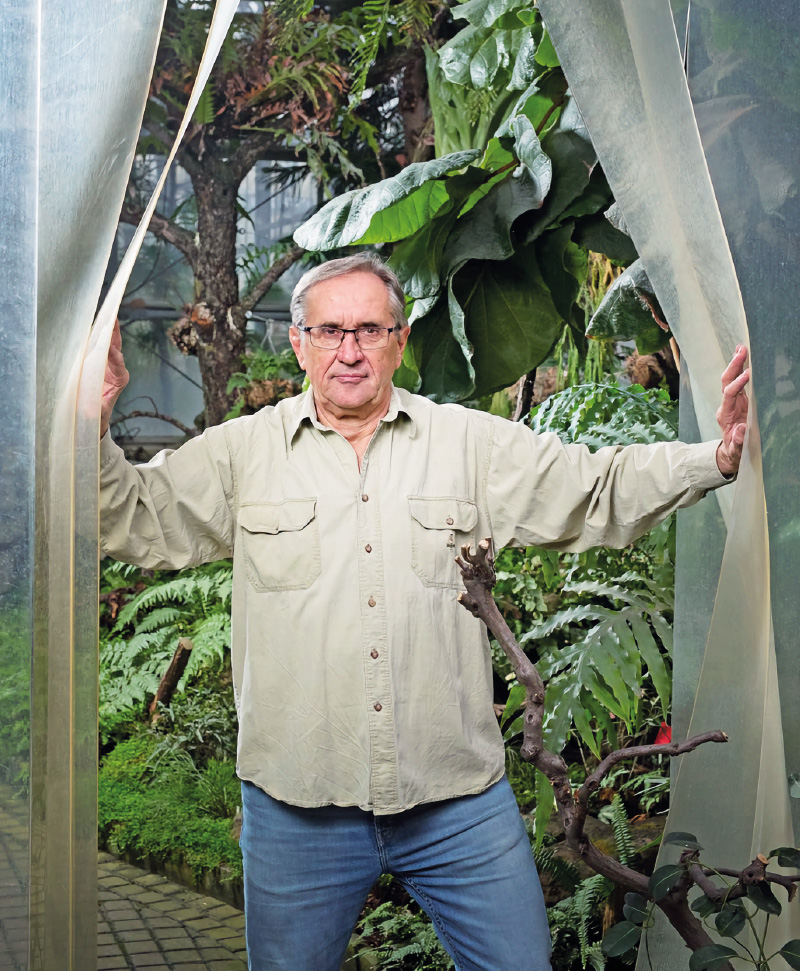
Fig. 2. Visiting the greenhouse of the Botanical Garden of the Faculty of Science of Charles University in Prague, the oldest continuously functioning botanical garden in the Czech Republic
Fig. 3. On the edge of the Colco canyon in the southern Peru, one of the deepest canyons of South America
In recent years, we have left the country due to political instability and clashes between Uzbeks and Kyrgyz, but this year we would like to return to the country after twenty years since the beginning of the project and once again assess the stability of the Petrova Lake dam with numerous so-called thermokarst depressions and lakes, where the melting glacier is constantly bringing a mass of water into it and the lake volume is constantly increasing over time.
Unfortunately, the Czechs’ very good reputation in Kyrgyzstan – and this was also true during the times of Czechoslovakia, when many Kyrgyz studied here – was ruined by the failed project to build dams and hydroelectric power plants on the Naryn River (a tributary of the Syr Darya); then, a company that had not built anything abroad or in the Czech Republic before that time was involved at the government level and won the construction tender. We probably all still remember that embarrassment in the media. We have several quality companies that, if they had participated in the tender at the time, could have made a billion-dollar business for the Czech Republic. At the same time, however, we were evaluated as the best Czech development project for many years of work in Kyrgyzstan and reducing natural risks. Subsequently, in 2012, another project was carried out under the patronage of NATO – it also has its own security research, finding water sources for the drying up Aral Sea. And that was really interesting, especially considering today’s political situation. I received a recommendation directly from NATO headquarters in Brussels to include Russian scientists in the project, supposedly as part of the then rapprochement of the two armies. I remember that back in Bishkek, I witnessed a “friendship” between local Russian soldiers and soldiers from the American Manas base. And everyone got on very well back then…
I know that as the discoverer of the Amazon’s sources, you are preparing a grand voyage for Netflix from its mouth to its sources. What exactly do you want to say or prove with this journey?
Brazilian director Yuri Sanada is preparing a series of films about the Amazon for Netflix, YouTube, and perhaps even Hollywood. He recently approached me asking if I would like to collaborate with him on a two-year expedition to produce films about the Amazon for these companies. In addition, he was excited to learn that we were celebrating a hundred years of diplomatic relations with South American countries and that our exhibition, organized to mark the twenty-fifth anniversary of the discovery of the sources of the Amazon, was travelling through Latin American countries and universities. In addition to Chile (two universities in Santiago) and Argentina (Buenos Aires, Mendoza), the exhibition will also stop at the Catholic University in Rio de Janeiro, where the rector is a Jesuit who knows the work of the Czech priest, missionary, and creator of the first map of the Amazon, Samuel Fritz, so it will all be somehow symbolically joined together.
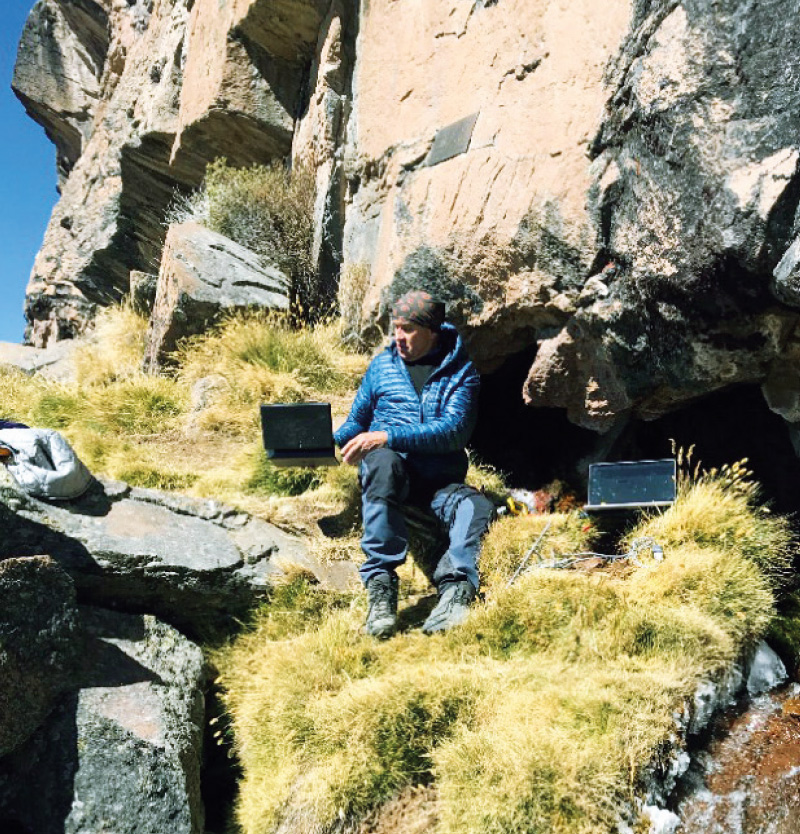
Fig. 4. At the Amazon’s rock spring, one of the two sources of the Carhuasanta River below the top of Mismi in the Chila Mountains in the Peruvian Andes
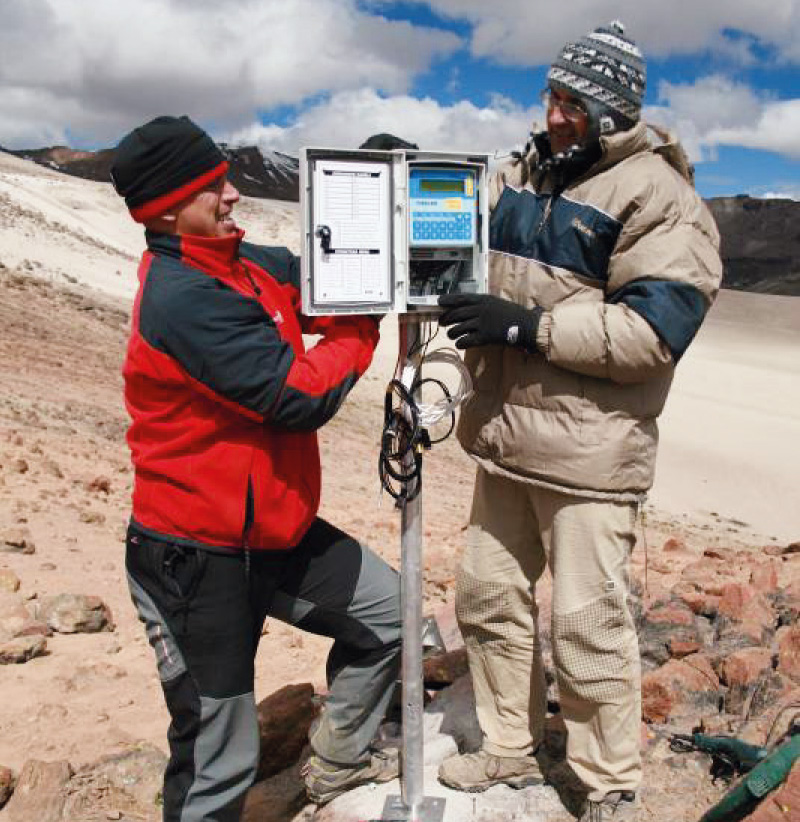
Fig. 5. Installation of the climatological station in the source of the Amazon River in Peru (5,051 m above sea level), the second highest climatological station in South America
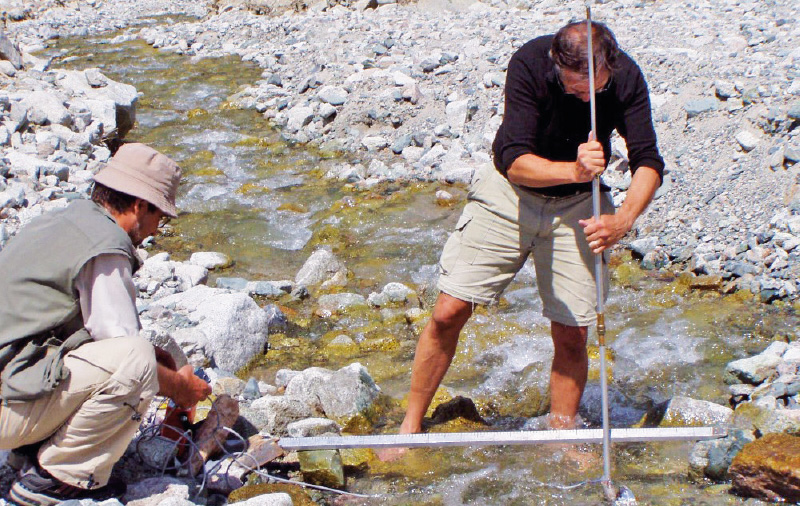
Fig. 6. Hydrological research in Ala Archa National Park in the Tyan-Shan Mountains in North Kyrgyzstan
In recent years, we have left the country due to political instability and clashes between Uzbeks and Kyrgyz, but this year we would like to return to the country after twenty years since the beginning of the project and once again assess the stability of the Petrova Lake dam with numerous so-called thermokarst depressions and lakes, where the melting glacier is constantly bringing a mass of water into it and the lake volume is constantly increasing over time.
Unfortunately, the Czechs’ very good reputation in Kyrgyzstan – and this was also true during the times of Czechoslovakia, when many Kyrgyz studied here – was ruined by the failed project to build dams and hydroelectric power plants on the Naryn River (a tributary of the Syr Darya); then, a company that had not built anything abroad or in the Czech Republic before that time was involved at the government level and won the construction tender. We probably all still remember that embarrassment in the media. We have several quality companies that, if they had participated in the tender at the time, could have made a billion-dollar business for the Czech Republic. At the same time, however, we were evaluated as the best Czech development project for many years of work in Kyrgyzstan and reducing natural risks. Subsequently, in 2012, another project was carried out under the patronage of NATO – it also has its own security research, finding water sources for the drying up Aral Sea. And that was really interesting, especially considering today’s political situation. I received a recommendation directly from NATO headquarters in Brussels to include Russian scientists in the project, supposedly as part of the then rapprochement of the two armies. I remember that back in Bishkek, I witnessed a “friendship” between local Russian soldiers and soldiers from the American Manas base. And everyone got on very well back then…
I know that as the discoverer of the Amazon’s sources, you are preparing a grand voyage for Netflix from its mouth to its sources. What exactly do you want to say or prove with this journey?
Brazilian director Yuri Sanada is preparing a series of films about the Amazon for Netflix, YouTube, and perhaps even Hollywood. He recently approached me asking if I would like to collaborate with him on a two-year expedition to produce films about the Amazon for these companies. In addition, he was excited to learn that we were celebrating a hundred years of diplomatic relations with South American countries and that our exhibition, organized to mark the twenty-fifth anniversary of the discovery of the sources of the Amazon, was travelling through Latin American countries and universities. In addition to Chile (two universities in Santiago) and Argentina (Buenos Aires, Mendoza), the exhibition will also stop at the Catholic University in Rio de Janeiro, where the rector is a Jesuit who knows the work of the Czech priest, missionary, and creator of the first map of the Amazon, Samuel Fritz, so it will all be somehow symbolically joined together.
After the exhibition opens at this university, I should also give a lecture at the University of Belém at the mouth of the Amazon, from where a boat, powered by solar panels, will set sail upstream of the Amazon following in the footsteps of Samuel Fritz. Incidentally, Jesuit missionaries, including those from the then province of Bohemia, left significant traces throughout Latin America. This is evidenced not only by church monuments, but also by the settlements they founded.
But back to the planned expedition. The ship should also be equipped with satellite navigation for precise measurement of the length of the Amazon, so that it can finally be decided whether it is longer than the Nile. And there are also the long-standing, now perhaps extinguished passions regarding the discovery of its sources; we narrowly overtook a twenty-member helicopter expedition financed by the National Geographic Society under the leadership of Andrzej Pietowski, who had been preparing the expedition for two years and had three million dollars for it. The Czechs managed it with seven people on horses, in tents, and with a budget of 300,000 CZK. And we still had some left (laughs). It was a special meeting in the valley of the Lloqueta River. When they learned from us what our expedition had done in the field and with the help of the most modern equipment, they decided to fill an entire issue of National Geographic magazine with articles and make a film about the source area. However, six months later, at a press conference in New York, they announced to the world that they had discovered the main source of the Amazon in the summer… Ten years had passed since I gave a lecture on the sources of the Amazon at the conference of the Association of American Geographers (AAG) in Washington. It was attended by several hundred geographers, as well as most of the participants in the National Geographic Society expedition to the sources of the Amazon in 2000. Professor Pietowski apologized to me in front of everyone and generously supported us publicly. So, an American happy ending!
Professor, do you have any other hydrological or geographical dreams and goals that you would like to achieve?
I would like to visit Baikal again, the places I went to decades ago, to meet people I knew, if they are still alive, and to write a new book about this unique lake. But that is not possible now – I cannot go to a country that continues the terrible war in Ukraine.
I have many memories of Baikal and Siberia, and they cannot be forgotten. Two hours north by jeep from Baikal, I experienced the most extreme cold in the Boday Bo gold mine, in the Lena River basin; it was 55 degrees Celsius below zero. I would not want to freeze like that again, but I would very much like to soak up the atmosphere of the old times. Hopefully, after finishing my memoirs called Albertovské povídky (Albert’s Stories), I will still find time for that. And the second wish is to successfully complete the pilgrimage of our exhibition through South American countries, so that the discoveries of Czech geographers and Jesuit missionaries become more widely known to people, for example students or politicians and diplomats. It could help further research and perhaps even business in these beautiful countries. Last but not least, I would like to publish the long-awaited Atlas of Czech Lakes, which we have been talking about at our department for about twenty years. Hopefully I will see it happen.
Finally, let me ask a personal rather than a hydrological question. I know that you used to play football very well. Do you still play and do your children follow your steps in this respect?
The older son Martin played football for Sparta as a child, then switched to athletics, where he now competes very successfully in the hurdles for Dukla. Simultaneously, he has to focus on completing his studies at the University of Chemistry and Technology, where his thesis topic is natural stimulants from the Amazon, which he extracts in the laboratory from natural materials and samples sent from companies in Brazil. He then compares active ingredients, such as aphrodisiacs, obtained from natural products with synthetic ones, which are found in most commercial products, mainly due to price, and are not as effective. Latin America thus remains in the family. My younger son Adam played hockey for Vlašim and Sparta, and for a while he also played football for Vltavín Holešovice, before following his older brother’s example and ending up in athletics and hurdles. He is also finishing his studies in German at the Na Pražačce secondary school, so he also has to work hard. And I – I support my club Sokol Mladotice, which now plays in the 1st B class and Viktoria Pilsen in the league. I started playing football in the district championship in Mladotice and experienced three promotions. On the pitch in Plasy I also met a well-known Sparta player, Vít Lavička, who is younger than me, so I may have taught him something of his art (laughs). Now I just ride my bike along the Vltava to the north and back along the other bank and I am proud that I can still ride those forty to fifty kilometres on a classic bike without the help of an electric motor. And once or twice a week I go swimming. I am happy about that and I hope that my health and strength will last!
Professor, thank you for taking the time to be interviewed for VTEI journal. It was a very pleasant conversation and reminiscing. We wish you a lot of success in your travels around the world and in your further scientific work!
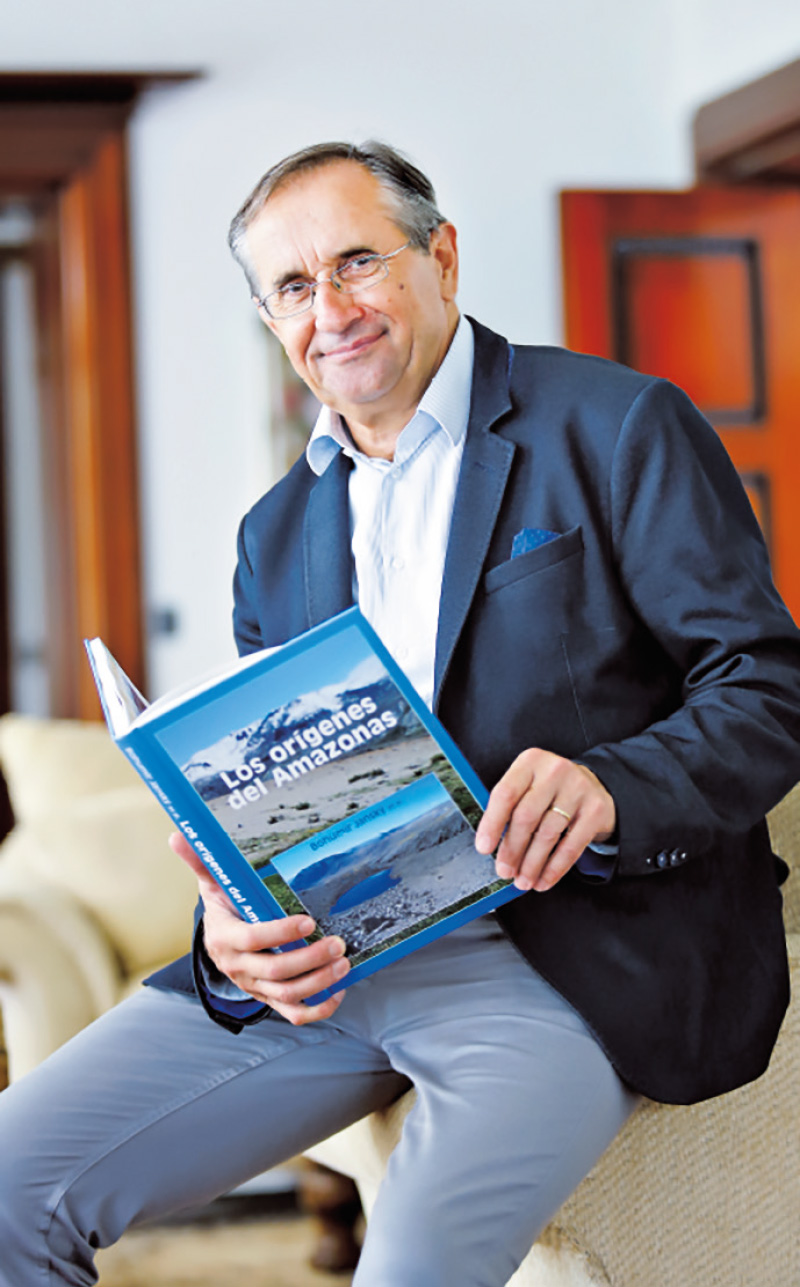
Prof. RNDr. Bohumír Janský, CSc.
Prof. RNDr. Bohumír Janský, CSc., was born on 30 July 1951 in Pilsen, and spent his youth in Mladotice in the northern Pilsen region. After graduating from secondary school in Plasy, he studied geography and biology at the Faculty of Science of Charles University. He lectures on physical geography, hydrology, limnology, oceanography, Latin American geography, and water management and protection at the Faculty of Science of Charles University. He has supervised 12 successful doctoral dissertations and more than 80 diploma theses. His research focuses on hydrography, hydrology, limnology, water protection, and natural hazard analysis. Since 1990 he has been involved in the Czech-German Magdeburg Seminars on Water Protection. Since the same year he has been engaged in research in the headwaters of the Amazon in Peru, where he led two Czech and one international expedition. Since 2005, he has led research teams at the Faculty of Science of Charles University within the Czech development cooperation projects in Kyrgyzstan, focused on research on glacial torrent lakes. From 2012 to 2014, he led an international team within a NATO project that dealt with the water management situation in post-Soviet Central Asia. He is an honorary member of the Czech and Slovak Geographical Societies. He received the Award of the Minister of the Environment of the Government of the Czech Republic for his lifelong contribution to environmental protection. In 2007, the President of Peru awarded him the highest state decoration “For Extraordinary Merit”, with the right to use the title “Komtur”, for his long-term pedagogical activity at Peruvian universities and for his research into the sources of the Amazon. He has given more than 60 lectures at foreign universities and international conferences.
